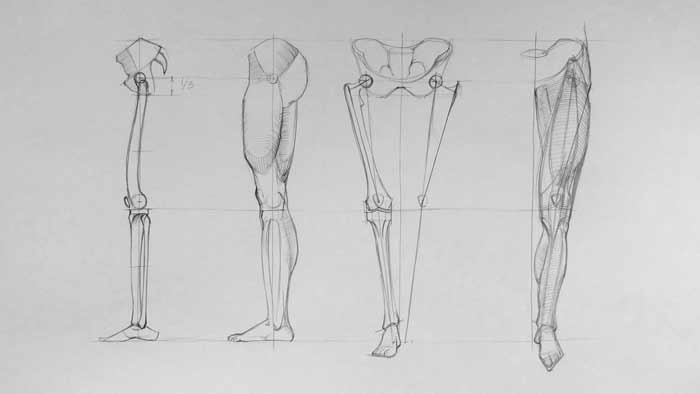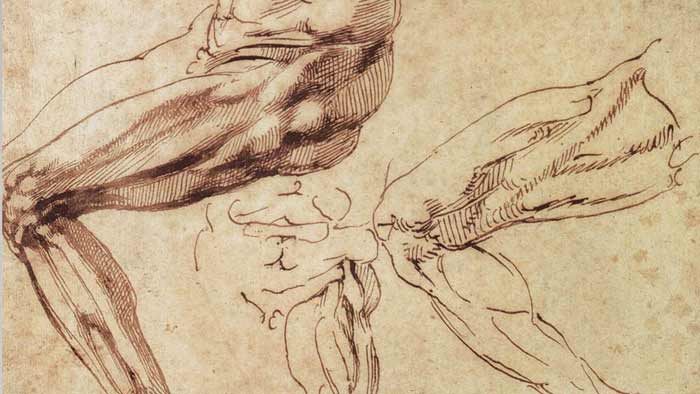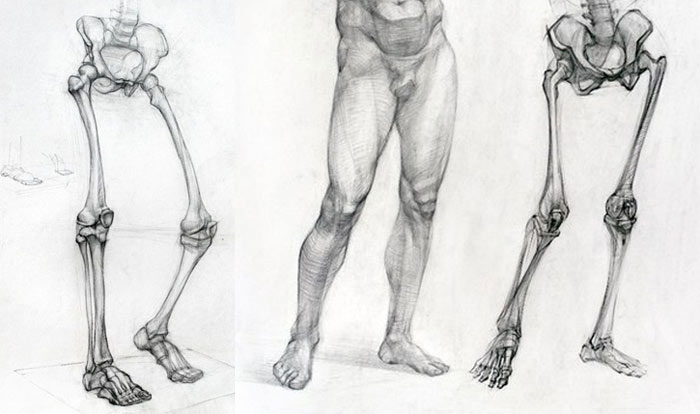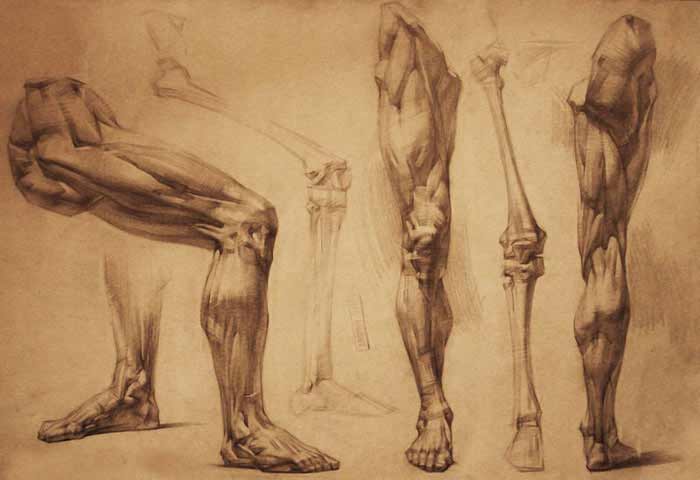Lower Limb Anatomy
Lower Limb Anatomy
Anatomy Lesson 12 – Part 1
In this video lesson, you will discover the lower limb anatomy.
Lower Limb Anatomy for Figurative Artists
In some books and videos, you may find that the lower limb is referred to as the leg, which is not entirely accurate. In anatomical terms, the leg is between the knee and the ankle joint on the human body.
Lower Limb Anatomy – Pelvis
The lower limb is connected to the pelvis, so I will say a few words about it.
The height of the pelvis is equal to one-fifth of the distance from the iliac crest, or the top edge of the pelvis, to the ankle.
The height of the male pelvis is about twenty centimeters, which is just under eight inches. An average female pelvis is shorter. It is about eighteen centimeters, or seven inches.
When it comes to pelvis’ width, an average female pelvis is slightly wider than its male counterpart. A female pelvis is generally between twenty-six and thirty centimeters, which is somewhere between ten and twelve inches.
The male pelvis is narrower than its female. It is about twenty-five to twenty-eight centimeters, or ten and a half inches.
Of course, when you create figurative artwork, you do not need to measure these distances with a ruler. Instead, you need to remember one proportion.
On average, the height of a person’s pelvis is the same as the height of their face (from the bottom edge of the lower jaw to the hairline).
This is also the same dimension as the length of the hand beginning from the wrist to the tip of the middle finger.
Lower Limb Anatomy – Bones
The upper leg has one bone – femur or thighbone.
When viewed from the front, the axes of the lower limb bones are not vertical, but tilted inward and converge at the bottom.
The femur (the upper leg bone) axis is tilted even more than axis of the lower leg bone, tibia. The axis of the tibia goes from the knee joint to the ankle joint.
The neck of the femur begins diagonally from its head, and then the femur shaft travels downward to the knee joint.






There are two bones in the lower leg. The larger one is called the tibia, also known as the shin bone. The shaft of the shinbone is located very close to the front surface of the lower leg.
The slender calf bone is called the fibula. It is located next to the shin bone on the outer side of the leg.
Lower Limb Anatomy – Muscles
At the top, you can see the mass of the gluteus medius muscle. When contracted, this muscle lifts the lower limb sideways.
The buttock part is defined as the gluteus maximus muscle.
The front portion of the thigh is occupied by the quadriceps groups. The word quadriceps means four heads in Latin. As described by its name, this group has four portions that insert into the tibia bone next to the knee joint via a single tendon. One head originates from the pelvis and three other heads are attached to the upper part of the thighbone.
The quadriceps is a very powerful group. Its main function is to straighten, or extend, the lower leg from a bent position at the knee joint, and flex the thigh at the hip joint.
Another muscle that influences the appearance of the thigh is the tailor’s muscle. It travels from the pelvis to the upper, inner point on the shinbone.
There is one more important group of muscles in the thigh. It is called the adductor group. Its name comes from the primary action of this group. This movement is the adduction of the upper leg at the hip joint – pulling it closer to the middle line of the body.
At the rear side of the thigh is the hamstring group of muscles. This group consists of three muscles. The main action of these muscles is to extend, or straighten, the thigh at the hip joint and flex, or bend, the leg at the knee joint.
Closer to the knee, the quadriceps group and the hamstring group become tendons. This slims the mass of the lower limb next to the knee, so that the width of the knee is not influenced by the muscles, but depends on the dimensions of bones.
The geometry of the lower leg mostly depends on the shin and calf muscles.
On the front portion of the leg is the shin muscle. This muscle begins at the upper part of the tibia and the fibula and inserts into the second through fifth toes of the foot at points on their second and third phalanges. This muscle lifts the foot upward.
Also, here we can see the soleus and the calf muscles, which are located on the rear side of the leg.
The calf muscle flexes the leg at the knee joint, and together with the soleus muscle, they extend the foot, pointing it downward.
The width of the leg depends on the mass of its muscles, but the width of the ankle depends on the width of the tibia and the fibula bones…
[ The full lesson is avaibale to Anatomy Master Class members ]
To learn more about the lower limb anatomy, enrol in the Anatomy Master Class
Simple Pricing, No Surprises
One-time payment - Only $97 USD
ENROLL NOW



